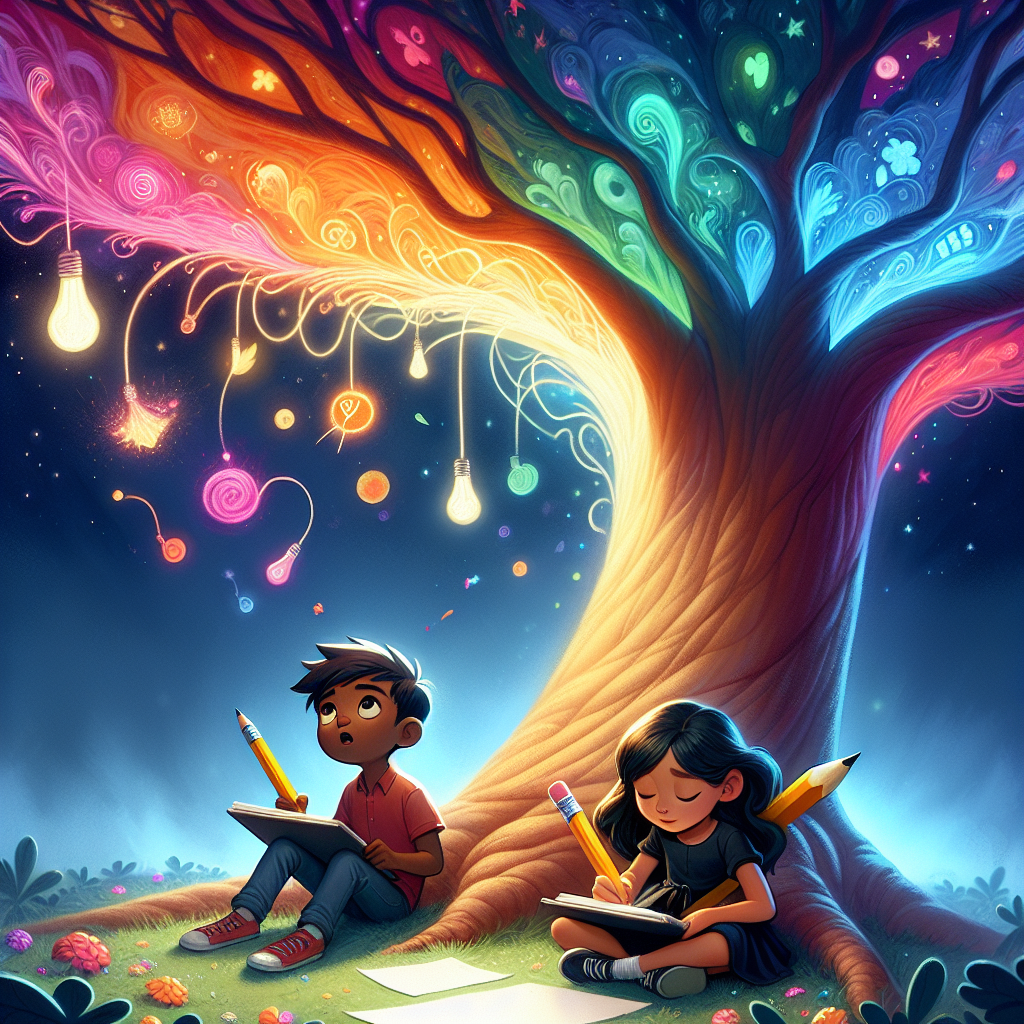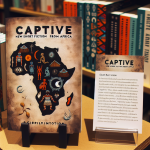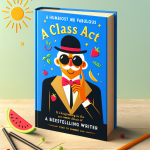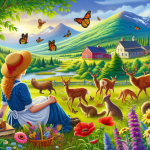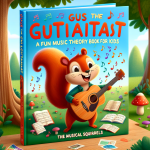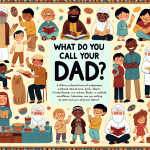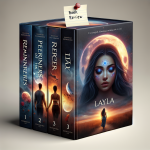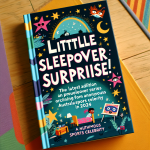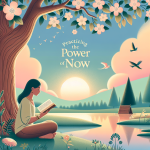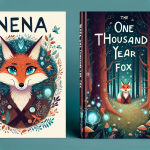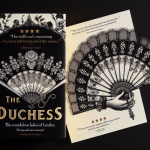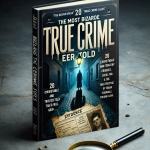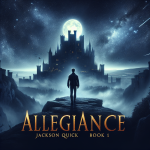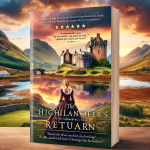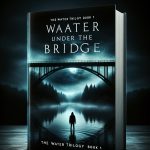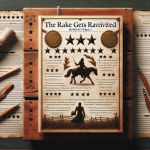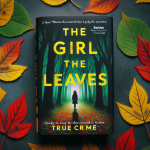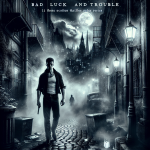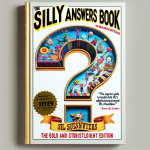As an Amazon Associate I earn from qualifying purchases.
Unlock Your Child's Creativity with “What Do You Do With an Idea?” — A New York Times Best Seller
When a child stumbles upon an idea, the journey that unfolds can be extraordinarily transformative. “What Do You Do With an Idea?” by Kobi Yamada is a New York Times best seller that gracefully navigates this magical process through the eyes of a young protagonist. This enchanting children's book delves into the evolution of an idea, capturing the insecurities, excitement, and eventual triumph associated with nurturing creative thinking. Its narrative simplicity, coupled with the vivid illustrations by Mae Besom, makes it a compelling read for both kids and adults alike.
A masterpiece in visual storytelling, the book tackles significantly relevant issues in today's fast-paced world—encouraging children to trust their imagination and persevere through self-doubt. It symbolizes the essence of creativity and the courage needed to bring an idea to life, making it not just an instructional tale but an inspirational guide. By providing a poetic exploration of how ideas grow and transform, “What Do You Do With an Idea?” solves a critical problem in child development: fostering an environment where young minds feel empowered to explore and innovate.
Plot
“What Do You Do With an Idea?” follows a young child who discovers an idea and is initially unsure what to do with it. The idea is portrayed as a golden egg with a crown, reflecting its potential and uniqueness. The child grapples with self-doubt, wondering whether the idea is too different or peculiar to be shared. As the narrative progresses, the child gains confidence, begins nurturing the idea, and eventually allows it to flourish. The story culminates with the idea transforming into something wondrous, symbolizing the power of embracing and acting upon one's creativity.
Characters
The main characters in the book include a young child and an anthropomorphized idea depicted as a golden egg with legs and a crown. The child remains unnamed and ungendered, allowing readers to project themselves into the character’s shoes. Secondary characters include the skeptical people around the child who make the child question the validity of the idea. Despite the lack of many characters, these figures play crucial roles in illustrating the internal and external conflicts the child faces throughout the story.
Writing Style
The writing style of “What Do You Do With an Idea?” is simple, poetic, and evocative, tailored to engage young readers while also resonating with adults. The language is accessible yet profound, using metaphors and analogies to convey complex themes of creativity and self-belief. The author employs repetitive phrasing to emphasize the child’s journey from doubt to confidence. This effective use of repetition and simplicity makes the story memorable and impactful, encouraging readers to reflect on their own experiences with ideas and creativity.
Setting
The setting of the book is largely abstract, taking place in a fantastical and symbolic world that mirrors the child’s inner thoughts and emotions. Initially, the world is depicted in mostly grayscale, signifying the uncertainty and doubt the child feels about the idea. As the story progresses and the child’s confidence grows, the illustrations become more colorful and vibrant, reflecting the blossoming of the idea and the positive impact of embracing creativity. This gradual transformation in the setting visually represents the narrative arc and the emotional journey of the protagonist.
Unique Aspects
One of the unique aspects of “What Do You Do With an Idea?” is its seamless blend of visual and textual storytelling. The illustrations and the narrative work in tandem to convey the burgeoning realization and eventual acceptance of the idea. Moreover, the story’s universal theme of nurturing and believing in one's ideas is delivered in a manner that is both inspirational and accessible to readers of all ages. The book's open-ended nature encourages readers to draw their own meanings and apply the story to their own lives, making it a versatile and enduring piece of literature.
Children's Book
“What Do You Do With an Idea?” is a quintessential children's book that goes beyond traditional storytelling to address complex themes of creativity and self-acceptance. It is designed to inspire young minds to value and nurture their unique ideas, promoting imaginative thinking. The simple yet profound narrative, coupled with captivating illustrations, makes it an engaging read for children. It teaches valuable life lessons in an accessible and enjoyable way, fostering a love for reading and creativity in its young audience.
Creativity
The book serves as a powerful ode to creativity, emphasizing the importance of nurturing original ideas despite challenges and doubts. It encourages readers to recognize the potential of their ideas and understand that creativity often involves taking risks and stepping out of one's comfort zone. By presenting the idea as something tangible that grows and transforms, the book vividly illustrates the creative process and the rewarding outcome of perseverance and belief in oneself.
Inspirational Story
“What Do You Do With an Idea?” is fundamentally an inspirational story that speaks to both children and adults. It underscores the value of self-belief and the courage required to bring new ideas to life. The narrative encourages readers to embrace their individuality and the unique ideas that come with it. Through the child's journey, the story imparted important messages about resilience, patience, and the transformative power of believing in one's dreams.
Idea Development
At its core, the book is a guide to idea development. It illustrates the journey of an idea from inception to realization, highlighting the various stages of growth, doubt, nurturing, and eventual celebration. The story shows that ideas need to be cherished and developed, even when faced with skepticism or fear of failure. This aspect of the book provides a valuable framework for understanding and fostering innovation and creative thinking.
Visual Storytelling
The book’s visual storytelling is instrumental in conveying its message. The transition from monochrome to vibrant colors symbolizes the growing confidence and validation of nurturing the idea. The illustrations are intricately designed to capture the emotions and transformative journey of the idea, adding depth and dimension to the narrative. This visual evolution not only enhances the reader's experience but also powerfully illustrates the impact of creativity and belief on the world around us.
Pros of Children's Books
Creativity
Children's books that emphasize creativity provide a platform for young readers to explore their imagination. Colorful illustrations and imaginative scenarios encourage children to think outside the box. Creative stories often incorporate fantastical elements that can captivate attention and foster a love for reading. This helps in developing cognitive flexibility and can enhance problem-solving skills as children envision multiple possibilities and outcomes.
Inspirational Story
Inspirational stories can be profoundly impactful for young readers. These stories often feature characters who overcome obstacles, fostering resilience and perseverance. By depicting positive role models and moral lessons, inspirational stories can guide children in their personal development, teaching them the value of kindness, honesty, and hard work. Such narratives can boost a child's self-esteem and inspire them to face their own challenges with courage.
Idea Development
Idea development is a crucial component of children's books, providing a structured way for kids to understand complex concepts. Narratives that build upon a central idea or theme help children develop logical thinking and comprehension skills. These books often encourage kids to ask questions and seek answers, promoting a deeper understanding of the subject matter. Recognizing patterns and sequences in stories can also aid in cognitive development.
Visual Storytelling
Visual storytelling in children's books can make the reading experience more engaging and memorable. Illustrations support the text and help convey emotions, settings, and actions that words alone might not fully capture. This multi-sensory approach can be particularly beneficial for visual learners and children with varying reading abilities. Rich, detailed images can also spark conversations and further exploration of the story's themes.
Cons of Children's Books
Creativity
While creativity in children's books is often beneficial, it can sometimes lead to overly complex or confusing narratives. Young readers may struggle to follow stories that are too abstract or disjointed. Highly creative tales might also set unrealistic expectations, causing frustration or disappointment when real-life scenarios do not match up. There's a risk of overemphasizing fantasy at the expense of relatable, real-world experiences.
Inspirational Story
Inspirational stories can occasionally come across as overly moralistic or preachy, which may disengage young readers. Characters in such stories are often depicted as perfect role models, which might set unattainable standards for children. Overly simplistic resolutions to problems can also give a false sense of ease, potentially undermining the complexity of real-life situations and leading to misconceptions about problem-solving.
Idea Development
The focus on idea development can sometimes result in overly didactic or instructional content, lacking the engaging qualities of a captivating narrative. If an idea is not presented in an age-appropriate manner, it can lead to confusion or boredom among readers. Over-explaining themes or concepts can also stifle a child's natural curiosity and imagination, making the reading experience feel more like a lesson than an adventure.
Visual Storytelling
Visual storytelling, while often beneficial, can occasionally overshadow the narrative, leading children to focus more on the pictures than the story. This can be distracting and may impede the development of reading skills. If the illustrations are too complex or not well-integrated with the text, they can confuse rather than clarify. There's also a risk that children may become overly reliant on visual cues, making it challenging to engage with text-only books in the future.
FAQ
What age group is your children's book suitable for?
Our children's book is perfect for kids aged 4-8. The story and illustrations are designed to inspire creativity and imagination in young readers.
How does your book encourage creativity in children?
The story incorporates activities and open-ended questions that prompt children to use their imagination. Additionally, the illustrations serve as a visual playground for kids to explore and create their own narratives.
Is your book an inspirational story?
Yes, our book tells an inspirational story that encourages children to dream big and believe in their unique ideas. The protagonist overcomes challenges through creativity and positive thinking.
Can this book help in idea development for kids?
Absolutely! The storyline guides children through the process of brainstorming, problem-solving, and developing their own ideas. It encourages them to think outside the box and see the value in their unique perspectives.
What is visual storytelling and how is it used in your book?
Visual storytelling is the art of telling a story through images, illustrations, and visual clues. In our book, the vibrant illustrations complement the text and add depth to the story, making it more engaging and helping children understand the narrative in a more immersive way.
How can parents or teachers use this book to foster creativity?
Parents and teachers can use the book as a tool for interactive reading sessions. By asking open-ended questions related to the story, they can encourage children to think creatively and discuss their own ideas and interpretations of the story. There are also activity suggestions at the end of the book to inspire further creative projects.
Are there activities included in the book?
Yes, at the end of the book, we have included a series of activities designed to spark creativity and idea development. These activities range from drawing prompts to storytelling exercises, all aimed at extending the book’s themes into actionable projects.
What themes are explored in this children's book?
The book explores themes of creativity, imagination, problem-solving, perseverance, and the importance of believing in oneself. These themes are woven into both the narrative and the illustrations, creating a holistic reading experience.
In conclusion, “What Do You Do With an Idea?” is a New York Times best seller that resonates profoundly with both children and adults, transforming the simple act of nurturing a thought into an exhilarating journey of self-discovery and growth. This mesmerizing children's book, penned by Kobi Yamada and illustrated by Mae Besom, ingeniously blends creativity, inspiration, and visual storytelling to emphasize the importance of fostering one's ideas, no matter how quirky or unconventional they might initially seem.
The narrative rigorously encourages children to embrace their ideas with enthusiasm and without fear of judgment or failure. As the story unfolds, the little protagonist learns to trust and invest in their seemingly odd idea, despite the discouragement from the external world. This underscores a critical lesson for young readers: that every idea, no matter how bizarre it appears at first, holds the potential for greatness if one is willing to give it the attention and love it requires.
Moreover, the book's illustrative magic cannot be overstated. Mae Besom's ethereal drawings serve as more than mere background visuals; they act as a second layer of storytelling, providing depth and emotion that words alone might not convey. The transformative journey from muted, grayscale pages to vibrant, colorful illustrations mirrors the growth of the idea itself – subtly yet powerfully reinforcing the narrative’s core message.
Parents and educators will find “What Do You Do With an Idea?” an invaluable resource in promoting creative thinking and resilience among children. It provides an excellent springboard for discussions about originality, perseverance, and the importance of embracing one’s unique perspective. The book’s underlying message is especially relevant in today’s dynamic world, where innovation and creativity are highly prized yet often stymied by fear of failure or non-conformity.
To summarize, “What Do You Do With an Idea?” is a must-read for anyone seeking to inspire young minds. Its engaging storyline, coupled with captivating illustrations, makes it an exemplary tool for nurturing creativity, instilling confidence, and promoting the importance of idea development. It reminds readers, young and old, that the ideas we cherish and nurture today can transform the world of tomorrow. This book is not just a delightful read but a vital investment in a child's intellectual and emotional growth, making it an essential addition to any bookshelf.
Amazon and the Amazon logo are trademarks of Amazon.com, Inc, or its affiliates.

